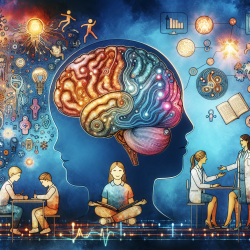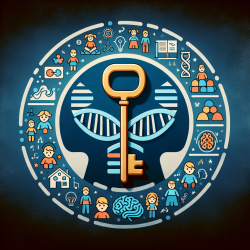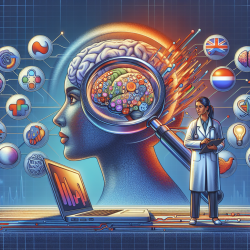Revolutionizing Autism Diagnosis with AI: A New Era for Practitioners
In recent years, the integration of artificial intelligence (AI) in healthcare has shown tremendous potential, particularly in the field of autism spectrum disorder (ASD) diagnosis. A groundbreaking study titled "Evaluation of an artificial intelligence-based medical device for diagnosis of autism spectrum disorder" provides compelling evidence on how AI can assist healthcare providers in diagnosing ASD more efficiently and accurately. This blog explores the study's findings and discusses how practitioners can leverage these insights to enhance their diagnostic skills and improve outcomes for children.
The AI-Based Device: A Closer Look
The study evaluated an AI-based Software as a Medical Device designed to aid primary care healthcare providers in diagnosing ASD. The device combines behavioral features from three distinct inputs: a caregiver questionnaire, analysis of two short home videos, and a healthcare provider questionnaire. Utilizing a gradient boosted decision tree machine learning algorithm, the device outputs either an ASD positive, ASD negative, or indeterminate result.
Key Findings and Implications
The study's results are promising, with the device achieving a positive predictive value (PPV) of 80.8% and a negative predictive value (NPV) of 98.3% for all study completers. For participants who received a determinate output, the device's sensitivity was 98.4%, and specificity was 78.9%. These figures indicate that the device can significantly aid in the timely and accurate diagnosis of ASD in primary care settings.
One of the most striking aspects of the study is the device's ability to provide a determinate output for nearly a third of the primary care sample, enabling timely diagnostic evaluation with high accuracy. This capability is crucial as it allows for earlier intervention, which is known to improve long-term outcomes in children with ASD.
Practical Applications for Practitioners
For practitioners, the integration of AI-based tools in diagnostic processes represents a significant advancement. Here are some practical steps practitioners can take to implement these findings:
- Embrace AI Tools: Incorporate AI-based diagnostic aids into your practice to enhance diagnostic accuracy and reduce the time to diagnosis.
- Continuous Learning: Stay informed about the latest advancements in AI and machine learning technologies in healthcare to continuously improve your diagnostic skills.
- Collaborate with Specialists: Use AI tools as a supplement to your clinical judgment and collaborate with specialists for complex cases where the device provides an indeterminate output.
- Advocate for Early Intervention: Promote the use of AI-based diagnostic tools to facilitate earlier intervention and improve outcomes for children with ASD.
Encouraging Further Research
While the study provides promising results, further research is essential to validate these findings across diverse populations and settings. Practitioners are encouraged to participate in and support ongoing research efforts to refine AI-based diagnostic tools and expand their applicability.
To read the original research paper, please follow this link: Evaluation of an artificial intelligence-based medical device for diagnosis of autism spectrum disorder.










